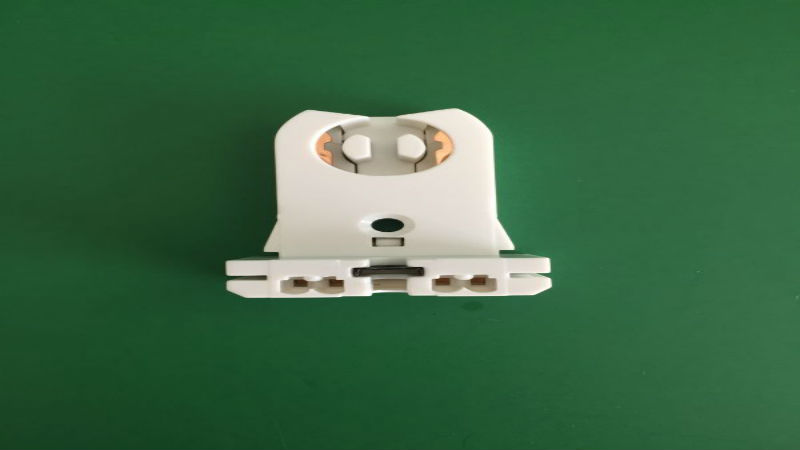The socket type is very important when servicing fluorescent lighting. Anyone who has maintained fluorescent lighting knows that the wrong socket can cause damage to the light, the housing, and even to the structure it is mounted on.
T8 sockets are used with linear fluorescent bulbs to attach the bulb to the ballast. They are commonly used in commercial and industrial installations but are becoming more popular in homes, garages, and backyard shops.
The “T” in T8 stands “tubular” – which is the shape of the lamp- and the “8” is the diameter of the lamp in 1/8″ increments. A T8 lamp is a 1″ diameter lamp which requires a T8 size socket. A T12 lamp is 1.5 inches in diameter. T8 sockets are available as shunted and non-shunted sockets. Which type to used depends on the size of the lamp and the ballasts.
The T8 sockets also come in shunted and non-shunted.
Shunted sockets join two points on a circuit with a conductor. There is a single track for the electrical current to travel from the ballast through the socket to the lamp pins. These sockets are designed to be only used with instant-start ballasts.
Non-shunted sockets are not joined and have two separate points of entry for the wires. This creates two tracks for the electrical current to travel. These sockets are designed to be used for programmed-start ballasts.
It is not always easy to visually identify the differences between shunted and non-shunted, so it is best to use a voltage meter to check if the electrical contacts are joined.
Before replacing the socket use proper safety. Ensure the power is cut off to the light at the circuit breaker. After shutting off the power, use a voltage meter to check that there is no power to the unit.






